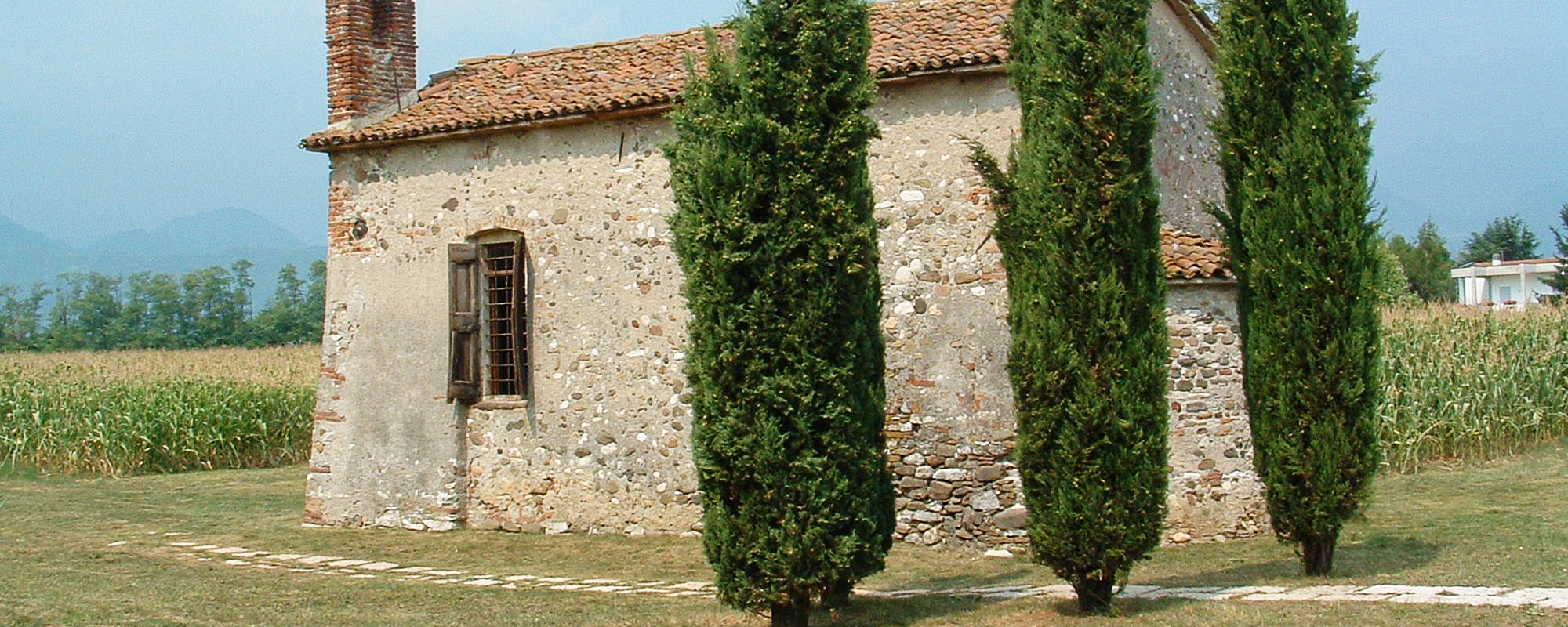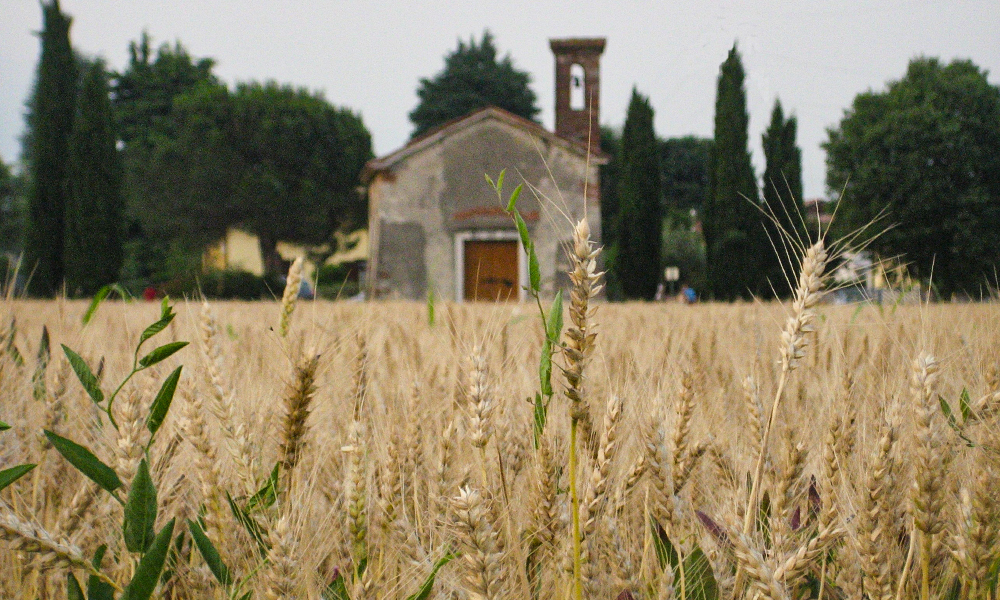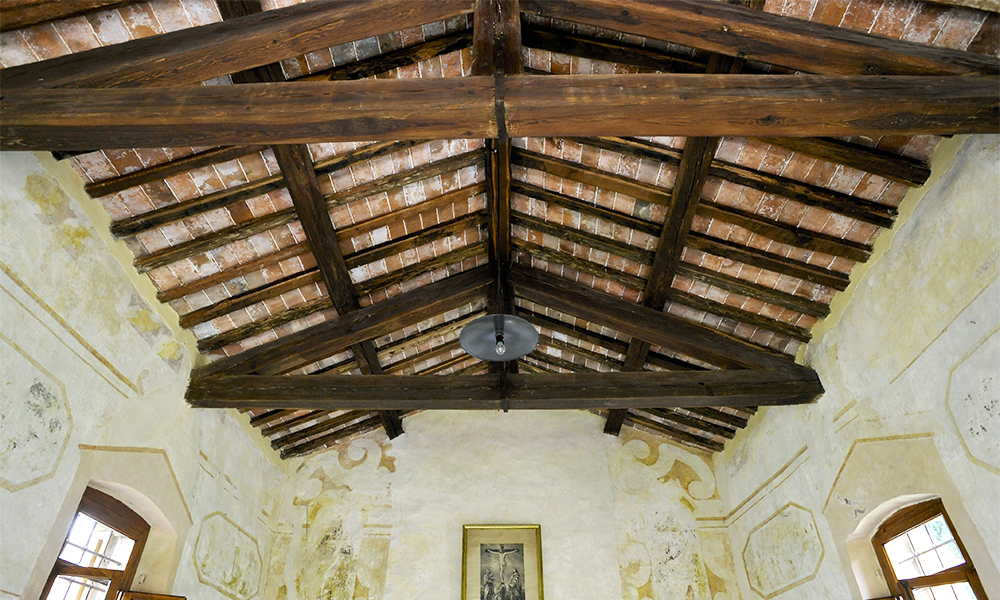Church of Santa Giustina
Schio


The little church we see today is the remake of a pre-existing small temple, presumably dating back to before the year one thousand and not very well documented; therefore, in trying to retrace its history, we have had to resort to hypotheses that we hope are not only suggestive.
The peculiarity of our oratory was that from 1581 until May 2003 it remained a private building, passed down from family to family: from the Dal Ferro to the Canneti, from the Vanzo to the Beltrame, from the Mistrorigo to the Muttoni.
The history of the country oratory of Santa Giustina di Giavenale necessarily presupposes an even fleeting reference to the saint to whom it is dedicated. Not that we know much about her, indeed. According to tradition, Justina belonged to an illustrious Paduan family; arrested perhaps in 304 during Diocletian’s persecution, she refused to apostatise and was therefore condemned to death. Her iconography refers to these meagre, essential biographical notes. Her illustrious origins often suggested to artists the depiction of the saint with a crown or with a globe and sceptre, symbols of even royal descent. The other iconographic elements relating to the virgin Saint Justina allude to her martyrdom: the palm in the first place and the book in her hands, the symbol of faith, as well as the dagger with which the fatal blow was struck into her chest.
The Church in Padua dedicated a first shrine to his saint; next to it, perhaps starting in the 6th century, Benedictine monks built a grandiose complex over time, the religious heart of which is the basilica overlooking Prato della Valle. Inside the basilica, there is a small oratory with the image of St Prosdocimo above its altar: on its sides runs an inscription in which the saint is called episcopus et confessor, i.e. bishop and witness of the faith.
It is of great importance that the basilica of St Justina preserves the ancient memory of the saint who was the first bishop of Padua and the entire central Venetia, under whose jurisdiction the Vicenza area also fell. Numerous fantastic tales run about his intransigent work of destroying paganism and his equally determined commitment to spreading Christianity: in our area, we particularly remember the legends relating to the destruction of the small temple dedicated to the god Summano on the summit of the mountain of the same name and the construction of the parish church of Pievebelvicino on the ruins of an earlier temple dedicated to Diana.
All this gives an idea of how much power the Church of Vicenza in the early Christian centuries had over the Church of Padua, which was already structured as a diocese and was also able to propose itself in our area with the prestige of its two great saints: Prosdocimo, bishop and confessor, and Giustina, virgin and martyr.
Opening and visits on Saturday afternoons from 3 p.m. to 5.30 p.m. in the temperate months by the ‘Friends of Santa Giustina’ Group.
Calendar of openings and guided tours at www.chiesasantagiustina.it
Tel. 339 311 3026
E-mail: gruppoamicidisantagiustina@gmail.com
Sito web: www.chiesasantagiustina.it
how to reach us